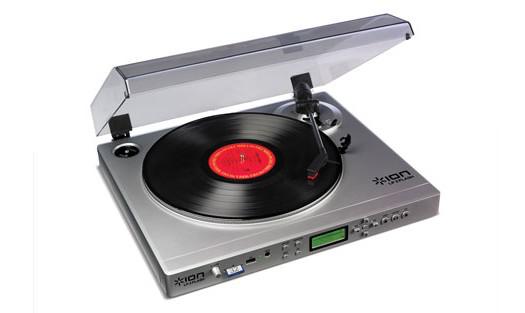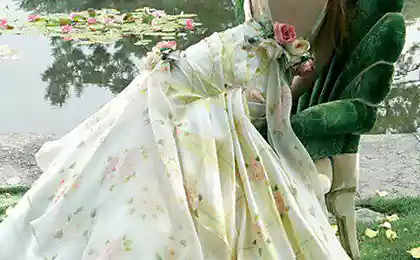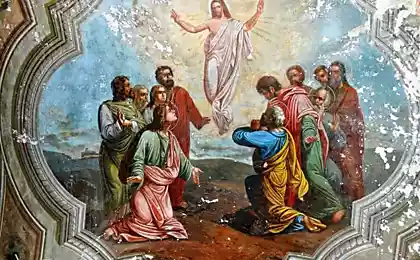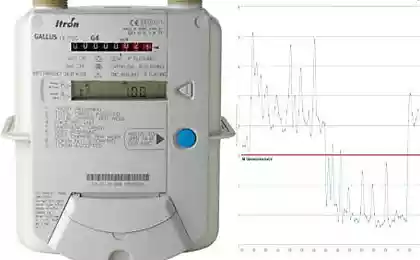668
March 2 - the birthday CD
March 2, 1983, the company Philips, Sony and Polygram have demonstrated the first CD.
The first recording and playback of sound was similar to the mechanisms of music boxes. They used a roller (cylinder), and then a disc that rotates, making it possible audio playback.
However, a variety of mechanical musical instruments (boxes, snuff boxes, clocks, Orchestrion, etc.) were not able to give mankind the main thing - to make it possible to reproduce the human voice. This problem was solved by the American Thomas Alva Edison who gave the world the phonograph.
6 ph + letter via svoychuzoy

Apparatus Edison
The principle of operation of the phonograph was based on the transfer of sound vibrations of the voice on the surface of a rotating cylinder covered with tin foil. Fluctuations deposited sharp steel needle, one end of which was connected to a steel membrane, collecting sounds. The cylinder must be rotated manually with a frequency of one revolution per second.
Phonograph made an international furor. However, its construction is not allowed to receive high-quality playback, and despite all the efforts of Edison and his followers to improve the instrument, phonograph proved to be a dead-end branch of the industry in the development of sound recording and playback.
Phonograph, gramophone, record player, tape recorder ... records, tapes ...

gramophone
Just a century humanity has gone a little way from the phonograph to the CD.
The rapid development in the late 1970s, computer technology has led to the possibility of storage and retrieval of any information in digital form from other media.
One of them was a CD, demonstrated by March 2, 1983 in the UK by Philips, Sony and Polygram. For that time the novelty was a sensation.
The diameter of the demonstrated CD is 12 centimeters. It as a demonstration was recorded Beethoven's Ninth Symphony. The duration of the recording, which was performed by the laser and reads as CD players, was 74 minutes - so much lasted the symphony in the most popular version of the time.
Gradually, optical discs are no longer exclusively of audio carriers. There CD-ROM, and then CD-R and CD-RW, where it was already possible to store any digital information. A CD-R that it can be recorded only once, and CD-RW - recorded and reused with the appropriate drive.

End of an era CD: stops the release of players.
The information on the CD is recorded in a spiral track of pits embossed on the polycarbonate substrate. Reading and writing of data is performed with a laser beam.

Algorithms for data compression helped to significantly reduce the size of digital audio files without any loss to the human auditory perception. The most widely used MP3 format.

The development of flash technology in the early 21st century has led to the fact that the Audio-CD are under threat of oblivion, as it happened with records and cassettes.

Source:
The first recording and playback of sound was similar to the mechanisms of music boxes. They used a roller (cylinder), and then a disc that rotates, making it possible audio playback.
However, a variety of mechanical musical instruments (boxes, snuff boxes, clocks, Orchestrion, etc.) were not able to give mankind the main thing - to make it possible to reproduce the human voice. This problem was solved by the American Thomas Alva Edison who gave the world the phonograph.
6 ph + letter via svoychuzoy

Apparatus Edison
The principle of operation of the phonograph was based on the transfer of sound vibrations of the voice on the surface of a rotating cylinder covered with tin foil. Fluctuations deposited sharp steel needle, one end of which was connected to a steel membrane, collecting sounds. The cylinder must be rotated manually with a frequency of one revolution per second.
Phonograph made an international furor. However, its construction is not allowed to receive high-quality playback, and despite all the efforts of Edison and his followers to improve the instrument, phonograph proved to be a dead-end branch of the industry in the development of sound recording and playback.
Phonograph, gramophone, record player, tape recorder ... records, tapes ...

gramophone
Just a century humanity has gone a little way from the phonograph to the CD.
The rapid development in the late 1970s, computer technology has led to the possibility of storage and retrieval of any information in digital form from other media.
One of them was a CD, demonstrated by March 2, 1983 in the UK by Philips, Sony and Polygram. For that time the novelty was a sensation.
The diameter of the demonstrated CD is 12 centimeters. It as a demonstration was recorded Beethoven's Ninth Symphony. The duration of the recording, which was performed by the laser and reads as CD players, was 74 minutes - so much lasted the symphony in the most popular version of the time.
Gradually, optical discs are no longer exclusively of audio carriers. There CD-ROM, and then CD-R and CD-RW, where it was already possible to store any digital information. A CD-R that it can be recorded only once, and CD-RW - recorded and reused with the appropriate drive.

End of an era CD: stops the release of players.
The information on the CD is recorded in a spiral track of pits embossed on the polycarbonate substrate. Reading and writing of data is performed with a laser beam.

Algorithms for data compression helped to significantly reduce the size of digital audio files without any loss to the human auditory perception. The most widely used MP3 format.

The development of flash technology in the early 21st century has led to the fact that the Audio-CD are under threat of oblivion, as it happened with records and cassettes.

Source:























